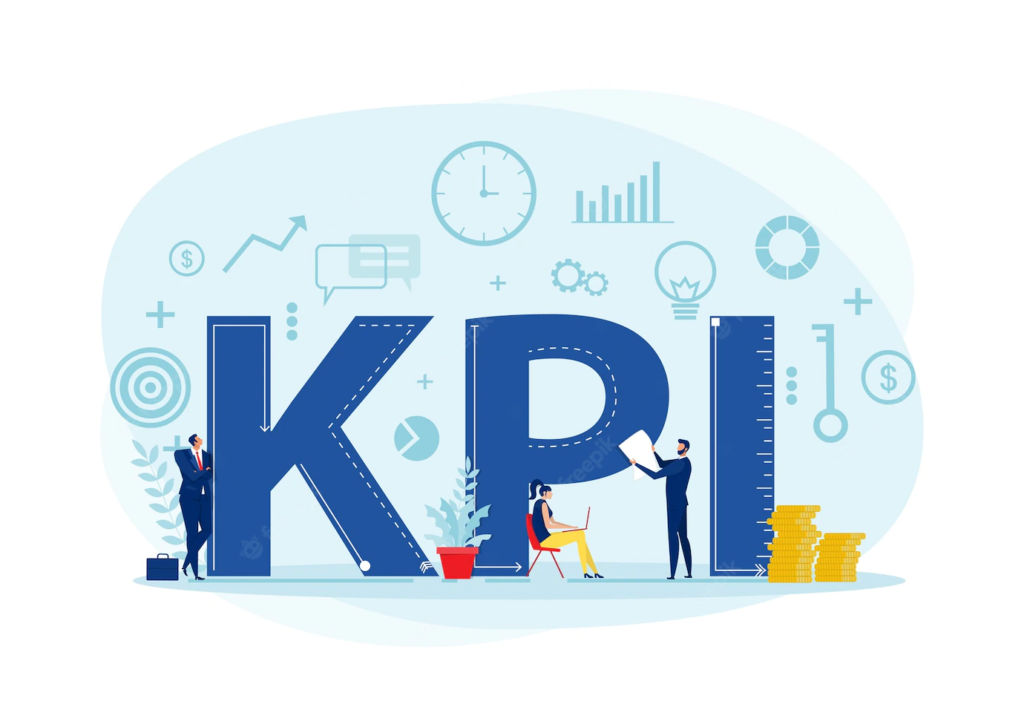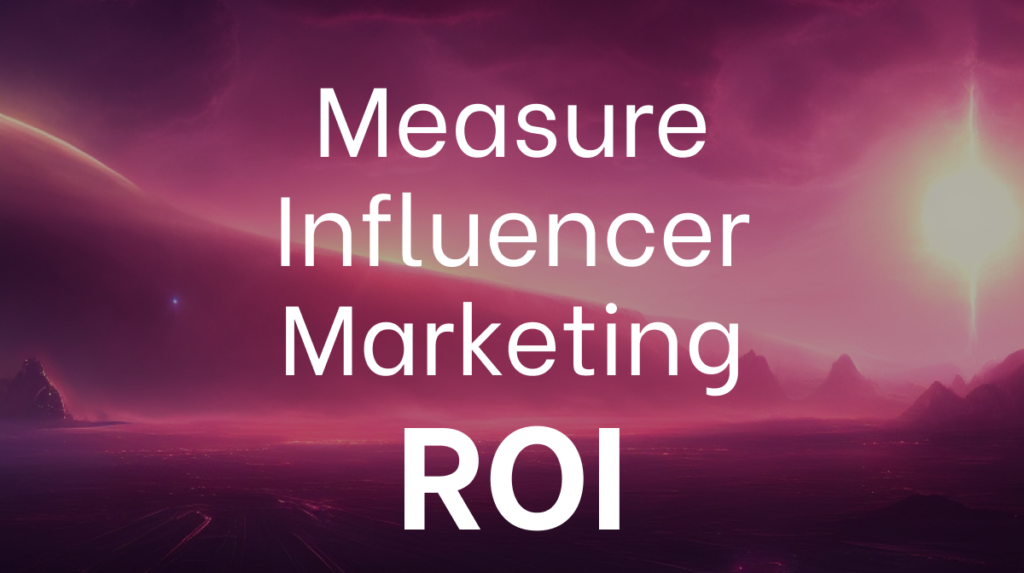Influencer marketing can be a powerful tool for driving sales and building brand awareness. However, as with any marketing strategy, it’s important to measure the return on investment (ROI) in order to track the success and make sure you’re getting the most out of the money you’re investing. Analyzing income and outcome is key to understand how to measure influencer marketing ROI.
Defining and Understanding Influencer ROI

When it comes to influencer marketing, measuring influencer marketing ROI is an important indicator of success. Not only does it help you measure the effectiveness of your campaigns, but it also provides valuable insights into how you can optimize your efforts in the future. But what exactly is influencer ROI? And how do you measure it?
Essentially, ROI stands for “return on investment” and is calculated by taking the amount of money you gained from a campaign divided by the amount of money you invested into it. By calculating your influencer ROI, you can determine whether or not an influencer’s efforts are yielding any tangible results.
To accurately see how to measure influencer marketing or your influencer ROI, there are two factors that need to be considered: income and outcome. Your income metric should include any revenue generated from the influencer’s promotional activities or content (e.g. sales or clicks). Your outcome metric should be any costs associated with running the campaign (e.g. media cost for advertisement placement).
By combining these two metrics, you can get a sense of your overall return on investment for each individual influencer as well as for all of your marketing initiatives as a whole.
Identifying Key Performance Indicators
When assessing the ROI of your influencer marketing campaign, it’s important to identify the key performance indicators that will provide you with valuable insights into how you’re faring. Examples of key performance indicators include:
- Total revenue generated from influencer campaigns – This is the direct income from your influencer campaigns, and is usually measured against the total expenses associated with the campaigns.
- Click-through rate (CTR) – CTR measures the percentage of people who click on a link in an influencer’s post or message. It can help you to determine how successful your campaigns have been at driving conversions.
- Engagement rates – Engagement rates measure how many people are engaging with an influencer’s post, such as liking, commenting or sharing it. It is a useful metric for gaging how effective your influencers were at drawing attention to your brand and driving awareness.
- Social reach – Social reach measures how many people are exposed to an influencer’s post and includes both their followers and any non-followers who may see it, such as people who follow relevant hashtags or industry news sources. It gives you an idea of how much influence (and therefore value) an influencer has brought to your campaign.
By setting key performance indicators for each campaign, you can easily track its progress and measure its success on a regular basis.
Calculating ROI: Measuring Cost Per Acquisition

Measuring the return on investment (ROI) of an influencer marketing strategy can be tricky, so here is how to calculate cost per acquisition (CPA):
Cost Per Acquisition
The cost-per-acquisition (CPA) measurement helps marketers evaluate the efficiency of their campaigns. CPA measures how much you’re spending on your influencer marketing program to acquire customers. It is calculated by dividing total campaign costs (including any incentives offered to influencers) by the number of people who purchased a product or service as a result of your influencer campaign.
For example, if you spend $500 on your influencer campaign and 15 people purchase from you as a direct result, then your CPA is $33.3. That number will help you easily compare the efficiency of different campaigns or platforms—so if one campaign yields a $50 CPA and another yields $25 CPA, it’s clear which one is more effective.
Read more:
- Revealing the Unknown: What is influencer marketing & How to success
- 14 Benefits of Influencer Marketing to Grow Business
Analyzing Reach and Engagement Metrics
Reach and engagement metrics are a critical factor to consider when measuring the ROI of your influencer marketing campaigns. Reach refers to how many people are seeing your influencer content anyway, while engagement measures how many people are actively engaging with it.
Both are important factors in understanding the success and overall reach of the influencer marketing platforms and your campaign. To help you gain insight, look at the number of likes, comments, shares, views, and other metrics that measure interaction with your content. Social media platforms provide granular data on these metrics for each post or story shared by an influencer.
You can also measure sentiment from comments left on posts and stories. A sentiment analysis will tell you whether viewers liked or disliked the shared content and help you determine if they felt positively or negatively towards your brand and their experience with it.
Be sure to track the results over time so that you can make comparisons between campaigns, different social media influencers, and even different social networks. This will help you gain a better understanding of which tactics yield the best results for future campaigns.
Estimating a Campaign’s Value

Measuring ROI for influencer marketing campaigns is easier said than done, especially when you have to estimate the value of a campaign. A good way to begin is by looking at the cost and engagement associated with the campaign.
What are the costs associated with launching an influencer marketing campaign? To start, there’s the cost of providing promotional products or services to influencers through marketing channels and collaborations. Additionally, those who work with agencies will likely have to pay fees related to those services.
When it comes to gaging engagement, you’ll want to look at metrics such as:
- Followers on social media (viewers used in an influencers’s content)
- Likes and shares associated with posts
- Comments posted underneath content
- Clicks generated by links in content
- Opens/views from newsletters and emails
- Conversion rates from sales attributed to campaigns
- Brand mentions from followers or influencers
- Traffic via Google Analytics (for tracking website visits)
In addition, you should track how long users spent engaging with content, as well as their sentiment (positive/negative feelings). This will help you understand how effective your campaign was overall for better ROI tracking in the future.
Optimizing Your Future Campaigns
A successful influencer marketing campaign requires careful optimization. Taking the time to analyze and measure the ROI of your campaigns can give you deep insights that will enable you to fine-tune future campaigns for maximum efficiency and efficacy.
As influencer marketing is a form of advertising, focus on the usual metrics such as Reach, Impressions, Engagement, Click-through Rate (CTR), Conversion Rate (CVR), Bounce Rate and Cost Per Acquisition (CPA). Additionally, it may be beneficial to measure qualitative results such as brand awareness, positive sentiment and trust from potential customers; this can be done via polls or surveys.
With these metrics available, you can then compare how different Influencers perform in a certain demographic or region – allowing you to find the right mix of influencers for your next campaign. By paying attention to what works and what doesn’t, you will be able to further optimize future campaigns for maximum ROI.
Influencer-Generated Content

As you plan your influencer marketing campaigns, the content generated by the influencers should be taken into consideration. Influencers create valuable content for your campaigns by sharing stories and experiences with their followers using product assets. This more positive engagement often leads to higher levels of engagement and brand awareness for your campaign.
When measuring the ROI of an influencer-generated campaign, there are several metrics that should be considered:
- Social Media Reach – How many people are engaging with the influencer’s content?
- Clicks and Impressions – Of those engaging, how many clicked on your links or viewed any accompanying visuals or videos?
- Engagement Rate – What percentage of those engaging are actively engaging with the content?
- Brand Mentions – Are people mentioning your brand in related posts and conversations?
- Sales Figures – Are people purchasing anything from your website after seeing an influencer’s post about it?
- Awareness – What is the overall brand awareness created by this campaign compared to previous campaigns?
Brand engagement
Measuring the ROI of your influencer campaigns largely relies on assessing how people engage with your brand. After all, the ultimate goal of influencer marketing is to increase brand recognition, loyalty and sales to target audience. This means it is important to measure how many people are engaging with your brand as a result of your influencer outreach efforts.
Here are some key metrics you can use to measure the engagement:
- Click-through and conversion rates
- Volume of comments on posts
- Number of followers gained from campaign period
- Number of shares or reposts related to the campaign
- Relevance score for the posts related to your campaign
- Overall sentiment about campaign content and brands
- Brand mentions online
- Engagement rate for each post shared by influencers involved in the campaign
- Website analytics data concerning referral traffic from social media channels
- Website analytics data concerning traffic from sponsored blog posts
By understanding these metrics, you can gain insight into how your influencer campaigns are performing and what kind of impact they’re having on your bottom line—helping you make better decisions when it comes to creating future campaigns and investing in influencers that provide those desired outcomes.
Using trackable and affiliate links

In addition to tracking the success of campaigns with views and followers, you can incorporate trackable and affiliate links in your influencer marketing efforts. By doing so, you can determine how much traffic a certain link or promotion brought to your website or product page.
Using trackable and affiliate links is a great way to attribute sales directly to influencers. It’s important to make sure that both parties are aware of the rules around this from the start, including any commissions associated with successful referrals.
These links should be used carefully and strategically. You want influencers to create content around the link, not just insert it into their posts and then move on – this limits believability for viewers, who will know instinctively if an influencer isn’t passionate about what they’re promoting.
Affiliate marketing is a great way to track ROI but it’s important to remember that it only measures direct sales – not any brand awareness or affinity created during campaigns. Keep this in mind when setting up campaigns and allocating marketing budget.
Social media analytics tools
Social media analytics tools are incredibly helpful when measuring the ROI of your influencer marketing campaigns. They can not only be used to track metrics, such as impressions and engagement, but can also measure qualitative results, such as sentiment.
Using these tools, you’ll have a comprehensive view into the effectiveness of influencer marketing success your campaigns. Here are some of the most popular analytics services for influencer marketing campaigns:
Brandwatch
This service provides detailed analytics regarding your influencer campaigns on major platforms such as Instagram and Twitter.
Sprinklr
Sprinklr offers a suite of analytics tools to help you better understand the performance of your influencer campaigns across all social media platforms.
Meltwater
Meltwater allows you to track market trends and analyze conversations around topics related to your influencer campaigns, offering valuable insights into how well they are performing.
As you leverage data from these tools to measure the success of your campaign, remember to consider both quantitative and qualitative metrics in order to better understand the overall ROI of your efforts.
6 influencer marketing KPIs

The key to unlocking the potential of your influencer marketing campaign is to track certain key performance indicators (KPIs). There are many KPIs you can use to track sales and measure the return on investment (ROI) of your campaign, but here are 6 of the most important ones:
Reach
This KPI will tell you how many people were exposed to your influencer marketing platform’s content. Tracking reach is important because it reveals how far and wide your message has been shared.
Engagement
Engagement measures the connections made between your influencers and their followers or viewers on social channels. It enables you to get a better understanding of how engaged potential customers are with your brand or product.
Clicks & Impressions
Clicks measures how many times a link in an influencer’s post has been clicked, while impressions measure how many times a post featuring your product has been viewed. These KPIs will help you track which influencers are providing the highest value and conversions.
Cost Per Acquisition (CPA)
This KPI measures the cost associated with acquiring new customers through an influencer marketing campaign. It helps you determine if you are investing too much or too little in an influencer marketing campaign relative to its ROI.
Brand Awareness & Sentiment: Brand awareness refers to how well-recognized a brand is, while sentiment looks at whether customers have positive or negative feelings about it—both of which can help to measure the success of an influencer marketing campaign.
Conversions: Finally, measuring conversions will provide insights into how successful your campaigns were in terms of sales and lead acquisition goals—the ultimate goal for any business.
FAQs
How do you measure impact of influencer marketing?
If you can see sales figures from influencer marketing campaigns and calculate ROI you can also calculate ROI. For this it is necessary to subtract influence cost of the profit generated, divide it by investment costs.
How do you measure ROI in digital marketing?
How can you estimate the ROI of your online marketing? Return on investment = (return – first investment) * 100 / 100. ROI = net profit + cost. Expecting Return. Lead numbers – Sales conversion rates – Average Price. 1000 lead * 0.25 = 50 = $1500.
What is a good roas for influencer marketing?
Most businesses aim for a ratio of 4:1, which in the modern day and age can prove very challenging with the advent of iPhones 1.4. A typical ROI is around 2:1 which means that you earn $2 per $1 of marketing.
Conclusion
The data-driven approach to calculating influencer marketing ROI involves tracking and measuring impact across a variety of metrics. It is important to define the key performance indicators that are most relevant to your campaign goals, and use them to track the success of your influencer marketing efforts.
By leveraging influencer data, you can identify the most effective influencers during your campaign, and effectively measure the return on investment of your influencer marketing campaigns.

